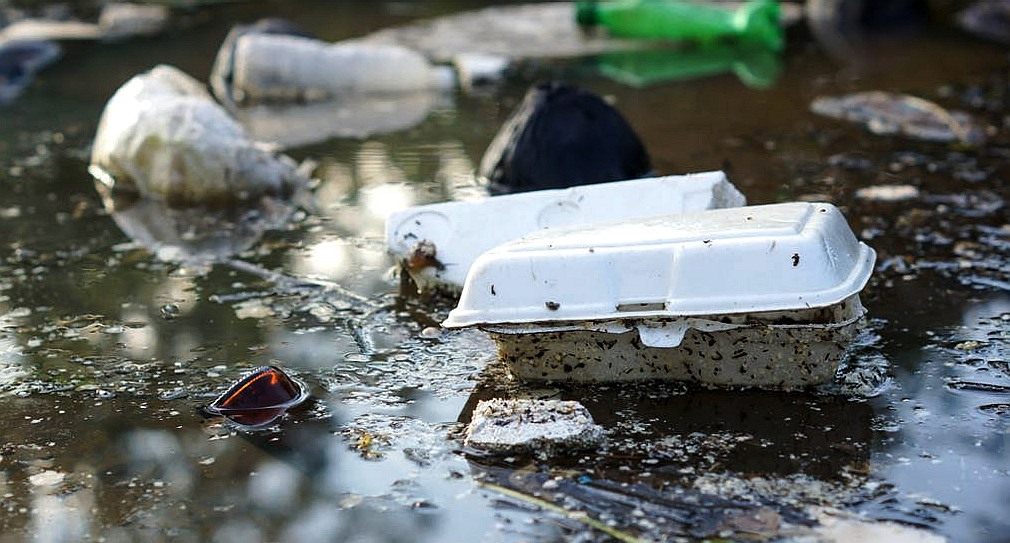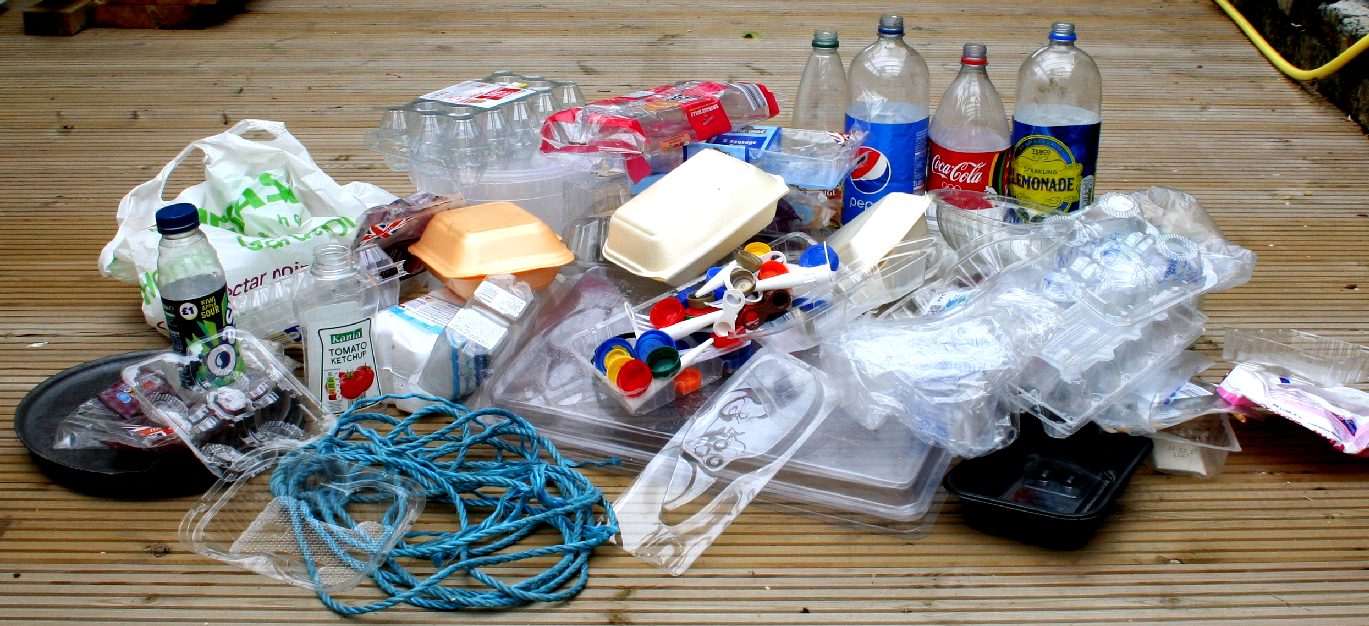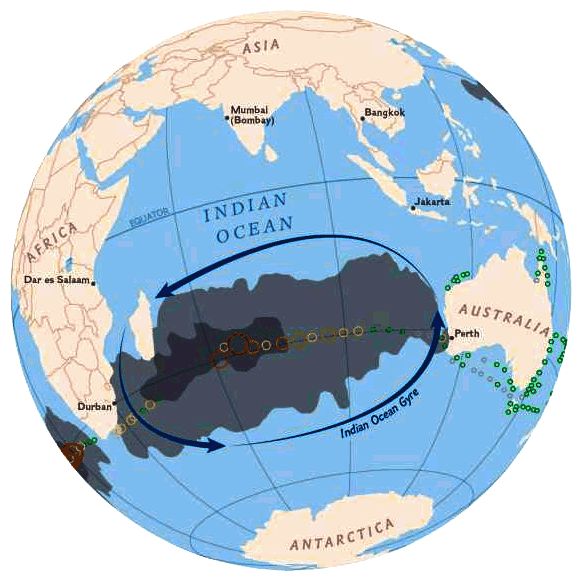|
MARINE LITTER
ABOUT - CONTACTS - FOUNDATION - HOME - A-Z INDEX
TERN ISLAND - One month's worth of marine waste collected from the beaches of the French Frigate Shoals.
Marine Litter is fast affecting all life in the oceans with a knock-on effect for humans that many people are only just coming to terms with.
10 WAYS TO TACKLE MARINE LITTER
1. Stop dumping untreated waste into the oceans 2. Reduce the use of single use plastics 3. Recycle plastics more effectively 4. Ocean Awareness campaigns 5. Beach cleaning parties 6. Prosecute unlawful river dumping 7. Prosecute dumping at sea 8. Marina cleaning traps 9. River cleaning efforts 10. Ocean cleaning efforts
All of the above would have a marked effect if working together, with prosecutions only for serious and persistent offenders, after warnings and efforts to make countries and corporations aware.
As the Cleaner Ocean Foundation we are keen to see any and all of the mechanisms above used to combat waste getting into the marine environment. Our main contribution to the fight against toxic build-up is the development of the SeaVax concept and making the world aware of the possibilities for cleaning and monitoring the health of our ocean that such technology could bring to the biggest ever cleaning drive that planet earth is ever likely to see - after climate change efforts that is.
WHAT IS MARINE LITTER
Marine
litter is waste created by human activity, either deliberately or accidentally
released into lakes, seas, oceans or other waterways. Floating oceanic debris tends to accumulate at the center of gyres and on coastlines, frequently washing aground, when it is known as beach litter or tidewrack. Deliberate disposal of wastes at sea is called ocean dumping. Naturally occurring debris, such as driftwood, are also present.
8.8 million tons of plastic that make its way from land to the oceans every single year. 700 marine species are faced with extinction due to the threat that plastic poses to them in the form of entanglement, pollution, and ingestion. And a disturbing new study found that by 2050, there will be more plastic in our oceans than fish.
UN RESEARCH
Researchers classify debris as either land- or ocean-based; in 1991, the United Nations Joint Group of Experts on the Scientific Aspects of Marine Pollution estimated that up to 80% of the pollution was land-based, with the remaining 20% originating from catastrophic events or maritime sources. More recent studies have found that more than half of plastic debris found on Korean shores is ocean-based. A wide variety of anthropogenic artifacts can become marine debris; plastic bags, balloons, buoys, rope, medical waste,
glass bottles and plastic bottles, cigarette stubs, cigarette lighters, beverage cans, polystyrene, lost fishing line and nets, and various wastes from cruise ships and oil rigs are among the items commonly found to have washed ashore. Six pack rings, in particular, are considered emblematic of the problem.
PLASTIC
EFFORTS AT REMOVAL
Techniques for collecting and removing marine (or riverine) debris include the use of debris skimmer boats (pictured). Devices such as these can be used where floating debris presents a danger to navigation. For example, the US Army Corps of Engineers removes 90 tons of "drifting material" from San Francisco Bay every month. The Corps has been doing this work since 1942, when a seaplane carrying Admiral Chester W. Nimitz collided with a piece of floating debris and sank, costing the life of its pilot. Once debris becomes "beach litter", collection by hand and specialized beach-cleaning machines are used to gather the debris.
SINGLE USE PLASTICS - This is just a small sample of the plastic packaging that you will find in retail stores all over the world. A good proportion of this packaging - around 8 millions tons a year, will end up in our oceans, in the gut of the fish we eat, in the stomachs of seabirds and in the intestines of whales and other marine mammals. of course we are the last in the food chain where the toxins can get us, if the micro plastics don't. Copyright photograph © 22-7-17 Cleaner Ocean Foundation Ltd, all rights reserved.
GLOBAL WASTE PROBLEM - The above views of planet earth as global views show us the Atlantic, Indian and Pacific ocean gyres and estimates of plastic waste in (thousands) numbers of pieces of plastic waste per square kilometer of sea. The Pacific Ocean gyres are held to be the worst at the moment.
A DANGEROUS CONVENIENCE, WE SAY: BAN THE BAG
Once you know the harm you are causing, there can be no justification for not doing one of four things:
1. Take your own carriers to the supermarket. 2. Use the cardboard boxes that they throw away to carry out your goods. 3. Unload directly from the trolley into your boot, so have a box in your boot to get the groceries from the car to your kitchen or freezer. 4. shop online and allow the supermarket to deliver your goods to you - so cutting out the middle man who needs carrier bags.
THE CONVERSATION NOVEMBER 2017
That takeaway box that was in your hands for 10 minutes on Friday night could be in the ocean forever. Single use plastics are a real concern for the planet. The use and throwaway nature of items such as food packaging and drinks bottles means that millions of tons of plastic waste are created. Unfortunately, much of this can enter waterways and oceans.
This week, the UK Government will discuss the possibility of introducing taxes on single-use plastic items, such as bottles and takeaway containers, to try to reduce the amount of plastic pollution entering the oceans. This follows the successful introduction of the 5p plastic bag initiative in 2015 which reduced plastic bag use by 80%. This taxation on single-use plastics could be a major step towards improving the ďplastic oceanĒ which humans have created.
Studies showing entangled turtles, sea birds with stomachs full of plastic pieces and can holders cutting into the flesh of seals are shocking and clearly show the effect of plastics on marine life Ė but it doesnít stop there.
So, letís imagine your Friday night takeaway box for a moment. If you are a careful consumer, you will have checked to see if itís recyclable before throwing it in the bin. Unfortunately, many containers are not recyclable. Even some of those that are may be thrown into general waste if they have food residue on them that canít be rinsed off. And how many people carry round washing-up liquid and a sponge on a Friday night anyway?
The excess of these containers enters the waste system due to the extreme amounts entering our waterways from land or through drainage systems. A study by the Rozalia Project that monitored storm drains in Boston Harbour found that a plastic item was released into the water every three seconds.
Now imagine that takeaway box has made its way to sea via urban waterways, moving with the currents until it reaches the deep ocean. At this stage, your takeaway box is a megaplastic (items of plastic bigger that 10cm in size that stay intact for a long time). These plastics have been made to resist age and not break down easily. They can move around the planet, enter huge floating garbage patches, reach far flung beaches and become buried in sand and sediment.
Degradation and sea pollution
But these takeaway boxes and bottles donít just stay as they were when we were using them. These containers slowly degrade and break down into macroplastics (2.5cm to 10cm), mesoplastics (5mm to 2.5cm), microplastics (smaller than 5mm) and sometimes even into nano particles (smaller than a micrometre, the equivalent of around 1/70th of the width of an average human hair). Depending on the size of your takeaway box, this can mean one box is turned into millions of pieces.
To get to this size, your takeaway box has been exposed to the sun, where UV degradation occurs. The pounding action of the waves, which causes mechanical damage, helps to fragment the plastic. Your takeaway box also becomes a home for many microbes which cause biodegradation of the plastic. As the plastic particles become less buoyant and covered in microorganisms, your takeaway box will sink, disappearing from the ocean surface into the depths. So, is this the last we see of your takeaway box? Unfortunately, no.
At this stage, the box may be at its most dangerous. Now, these many individual pieces can be eaten by marine life large and small, even those in the deepest depths of the ocean. These microplastics have large surface area to volume ratios, which mean that they concentrate chemical toxins on their surfaces that then can transfer to the animals that eat them. This ingestion has been seen in multiple marine organisms and has led to a debate over whether these can lead to ecological effects both to the organism and any humans who consume them.
What we do know, is that we need more research into how plastics degrade in the ocean and where they end up to fully understand what effect they may have on marine life.
So how much do you really care that your Friday night takeaway is being served in a plastic tray? Would it taste different if it was in a recycled cardboard container or even something as hipster as a bamboo tray? However you feel about this, without some action, you actually might end up eating your discarded takeaway box at some point in the future.
LINKS & REFERENCE
https://theconversation.com/tax-plastic-takeaway-boxes-the-scourge-of-the-oceans-87818
ABS - BIOMAGNIFICATION - BP DEEPWATER - CANCER - CARRIER BAGS - CLOTHING - COTTON BUDS - DDT - FISHING NETS FUKUSHIMA - HEAVY METALS - MARINE LITTER - MICROBEADS - MICRO PLASTICS - NYLON - OCEAN GYRES - OCEAN WASTE PACKAGING - PCBS - PET - PLASTIC - PLASTICS - POLYCARBONATE - POLYSTYRENE - POLYPROPYLENE - POLYTHENE - POPS PVC - SHOES - SINGLE USE - SOUP - STRAWS - WATER
IF WE ALL PULL TOGETHER - Scenes like this could be a thing of the past. A society based on plastic has to come to terms with what they are doing collectively and act to restore the planet to its former glory.
This website is provided on a free basis as a public information service. copyright © Cleaner Oceans Foundation Ltd (COFL) (Company No: 4674774) 2018. Solar Studios, BN271RF, United Kingdom. COFL is a charity without share capital.
|







